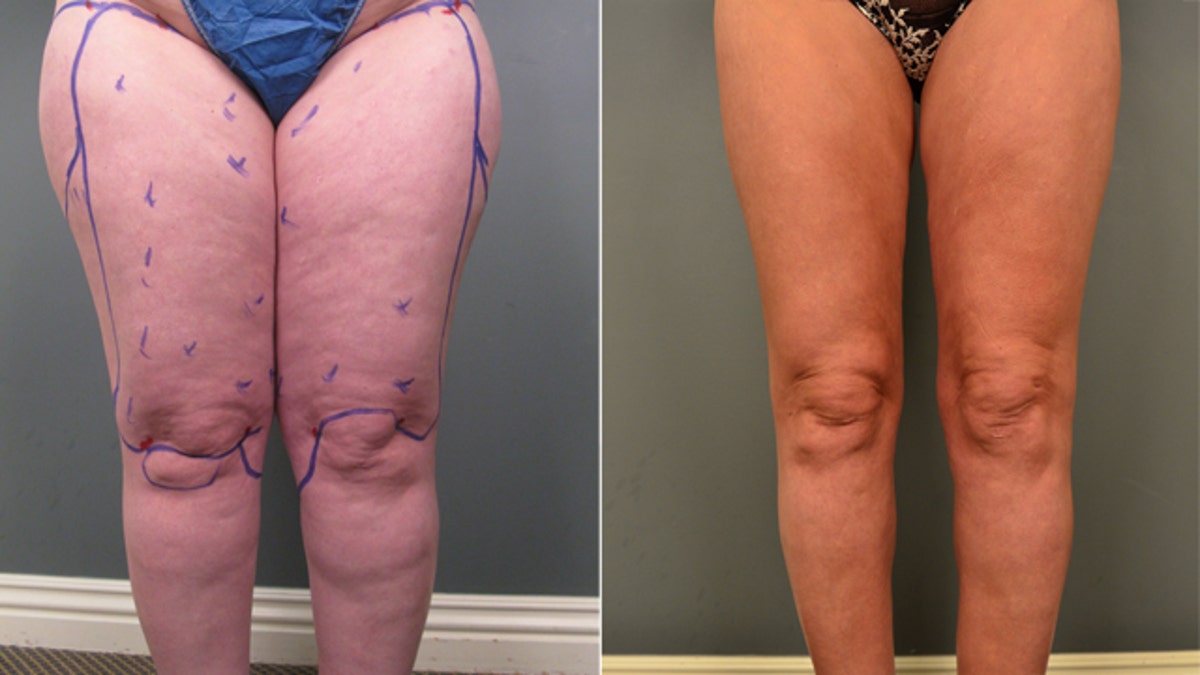
Jasna Turnic’s legs before (left) and after (right) getting liposuction to treat her lipedema.
Imagine spending 12 years of your life in pain, without knowing the cause. For one Salt Lake City woman, that was her life until she was diagnosed with lipedema, a chronic fat storage disease that almost exclusively affects women.
"My mobility was impacted badly. I shut myself down from a social life," Jasna Tursic, 45, told FoxNews.com
Lipedema usually arises during puberty and is believed to be genetic, Tursic’s surgeon, Dr. David Amron, a Beverly Hills liposuction surgery specialist, told FoxNews.com. The condition leads to an overgrowth of fat that disproportionately affects a woman's legs and can be seen in all body types, from thin to overweight.
The disease is "very specific to circumferential calf to ankle swelling" with "heaviness on top of the knees, giving legs a tree-like look to them,” Amron said.
The fat is usually accompanied by tenderness and, in extreme cases, can lead to immobility, a fate that doctors were predicting for Tursic.
Physicians initially misdiagnosed Tursic with lymphedema which, like lipedema, is an unnatural growth in the extremities. The difference between the two is that lymphedema stems from a malfunctioning of the lymphatic system, which causes swelling by fluids, not fat.
Tursic was in constant pain when doctors told her that she would eventually be wheelchair bound. She underwent five different surgeries for lymphedema, altered her diet, exercised, spent money on supplements and wore uncomfortable compression stockings for three years, but her pain persisted.
When Tursic was correctly diagnosed with lipedema in March 2012 by a cardiologist in Utah, she learned that the only way to rid herself of this debilitating disease was to remove the diseased fat through a procedure that is commonly considered cosmetic, liposuction.
Tursic was turned away by several plastic surgeons because of the difficulty in performing liposuction on the legs. If done incorrectly, the procedure could damage the lymphatic system, which could then lead to lymphedema and make a patient’s symptoms even worse.
Tursic turned to Amron after visiting multiple plastic surgeons in Utah, none of which wanted to help her.
"I was crying and said, 'You are my last hope! Please do your best," she said.
Since undergoing surgery in May 2013, Tursic's life has markedly improved. One day after liposuction on both her legs, she was up on her feet. She can now go to the gym and work out, instead of living on painkillers and signing up from disability like doctors has predicted for her.
While some may be see liposuction as a vanity procedure, Tursic believes her results— the condition shows no signs of making a comeback— make the case that it’s beneficial for those suffering from lipedema.
“[The surgery] changed my life so much,” she said.
